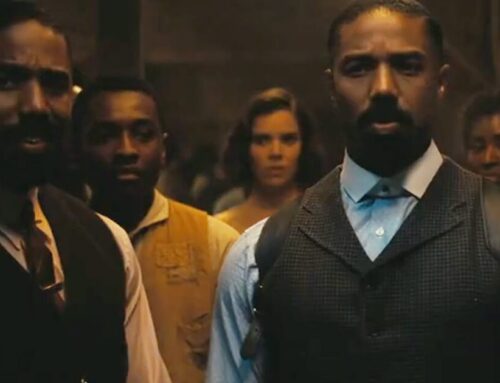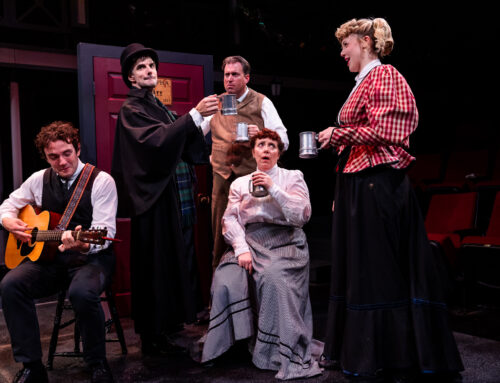A critic’s job is never done. I am always trying to learn more and deliver ever more nuanced reviews of the work I see. As a white critic, I am always trying to see beyond the lens of my whiteness. In reviewing IN THE HEIGHTS I didn’t understand the lack of representation of Afro-Latino characters as an issue. “Colorism” is the issue, and guest critic Matthew Stiuso makes a compelling case for diversifying diverse films by including Afro-Latinos as a central part of diverse Latin culture. The below article was originally posted at INCLUVIE.
The Lin-Manuel Miranda penned production was created as nothing short of a celebration of the largely Dominican neighborhood of Washington Heights, a struggling neighborhood alive with Black and Latino culture. In the musical, community landmarks: a mom and pop shop, a neighborhood salon, and a taxi dispatch service fight gentrification and the summer heat, while each character finds the balance between pride in their home and the desire to become greater than what the rest of the world thinks of them.

In the film adaptation, director Jon M. Chu turns each musical number into a massive show stopper, with grand set pieces and a wealth of diverse dancers. Yet, in this attempt to show reverence for the people of the Washington Heights barrio, Chu, or maybe more specifically those in charge of casting, left out a crucial part of the community, Afro-Latinos.
With only one Afro-Latina lead, specifically Leslie Grace, who plays Nina Rosario, a college student who is considered by her peers as “the one who made it out”, the film adaptation of “In The Heights” has become as associated with the celebration of Latino culture as it has been with colorism and erasure of dark-skinned Dominicans in Washington Heights.

One concept that has been mentioned in relation to the film is the “Brown Paper Bag Test”. This “test” is a metaphor that traces its origins back to parties in which a brown paper bag attached to the front door was an indicator of whether or not individuals were permitted to enter; those that were darker than the bag being barred entry. Although not denying Grace’s Afro-Latina heritage, those who have taken issue with the film have pointed out that her lighter skin still includes her in a more privileged group. Interestingly to note, Nina’s mother, who is a main character in the stage version, was written out of the film. With only a Puerto Rican father present in the movie, it is not clear whether Nina as a character is written to also be Afro-Latina as is Grace.
… the film adaptation of “In The Heights” has become as associated with the celebration of Latino culture as it has been with colorism and erasure of dark-skinned Dominicans in Washington Heights.
Having been made aware of the colorism issue in In The Heights before attending a showing of the film, I had made it a point to keep an eye out for just how prevalent the lack of diversity was. Upon viewing, you will see that Afro-Latinos are present in the film, but relegated to the background. It’s a case of diversity vs. representation, as none of the main speaking roles, or rather, singing roles, are played by dark-skinned actors, other than Corey Hawkins’ Benny, who is written specifically as being Black, rather than Latino.
Aside from Benny, none of the characters are designed so that they are prevented from being Afro-Latino specifically. Most characters mention specifically their nationality at points throughout, Usnavi (Anthony Ramos) being from the Dominican Republic, Abuela Claudia (Olga Merediz) having grown up in Cuba, and Carla from the salon (Stephanie Beatriz), being Chile-Domini-Cu-Rican, (although she humorously ad libs that she always says she’s from Queens).
In an interview with Felice León of “The Root”, both Chu and the cast were asked about the lack of dark-skinned Latinos in the film. The interview drew even more ire on social media, as both Chu and actress Melissa Barrera awkwardly excused the issue, with Chu remarking he needs to be educated more on the subject (which a non-Latino person making a film about Latinos seemingly should have already known plenty about), and Barrera dismissing intentional colorism by assuring that despite Afro-Latinos being present at the auditions, none of them were seemingly right for the roles.

Barrera’s reasoning echoes that of many who have attempted to justify non-representational casting, such as Sia claiming no autistic actors were good fits for her movie “Music”, or Thomas Hooper arguing that nobody could have played the role of transgender artist Lili Elbe in “The Danish Girl” better than cisgender actor Eddie Redmayne.
Although the onus does not fall on any one particular individual, both Chu and Lin-Manuel Miranda, who also has a small supporting role in the film have been called out specifically, as well as the casting directors of the film, both of whom are white. Although Chu and Miranda have both focused on creating diverse, celebratory works, neither has been completely free of controversy in the past. Miranda’s “Hamilton” did strive to only cast non-white actors in lead roles, however in doing so, it at times turned slave-owning Founding Fathers into “stannable” characters.
Similar accusations of colorism were levied against Chu’s 2018 film “Crazy Rich Asians”, which seemingly sidelined South Asian and Southeast Asian people. What’s important to note is that a large presence of light-skinned individuals, whether of Latino or Asian descent, is not inherently bad. Having grown up doing theater on Long Island in the early 2010’s, I’ve witnessed a fair share of white-washed productions of “Heights”, in which self-tanned Irish girls were cast as Nina or Vanessa. Comparatively, the film adaptation is leaps and bounds above what we’ve seen in the past.
… studios are still catering to what they believe will resonate with white audiences, even when casting “diverse” films.
However, the consistency in which characters or actors of lighter skin are preferred in films like “In The Heights”, “Crazy Rich Asians”, or Disney’s recent live action adaptation of “Aladdin”, is indicative of deep rooted issues in Hollywood, particularly the fact that studios are still catering to what they believe will resonate with white audiences, even when casting “diverse” films.

The main reason that films of this nature are held to a higher standard is because they emphasize how they are trying to accurately highlight cultures or communities. Racism has long prevented actors of color from getting leading roles, so when the opportunity arrives for a film that, by nature, will be casting people of color, there is not as much room for inaccuracy. A film set in Washington Heights, in which one character proclaims “our people survived the slave ships”, simply demands Afro-Latinos, the same way a Nina Simone biopic demands a dark-skinned actress to play the dark-skinned singer.
We are also put in a difficult position to make sure “In The Heights” succeeds as a film so that studios cannot attribute its failure to a lack of interest in Latino stories altogether, however, as a critic who looks specifically for representation in film, I simply believe we deserve better.






Leave A Comment
You must be logged in to post a comment.